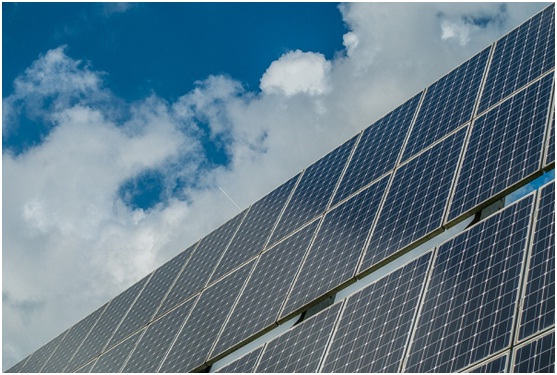
Time came to the end of October, after several waves of "630", "930" and so on, China's photovoltaic industry has laid the foundation for rapid growth in 2017. The new year is coming, looking forward to the future, for the photovoltaic industry still under the state subsidy, the next dominant market trend will still be the change of subsidy policy. Recently, Luo Wen, deputy minister of the Ministry of Industry and Information Technology, said that he will work with relevant departments to improve the PV subsidy policy and consider the gradual downward adjustment mechanism.
How will the subsidy be lowered?
Will the PV subsidy be lowered again in 2018? The answer is affirmative. According to the Notice of the National Development and Reform Commission on December 29, 2016, on the adjustment of on-grid tariffs for photovoltaic power generation onshore wind power, the on-grid tariff of photovoltaic power generation will be adjusted annually according to the cost changes. Therefore, the subsidy will definitely be lowered again. The key is how much the downward adjustment is.
At present, the benchmark electricity price of PV power plants in Class I to Class III resource areas in China is 0.65 yuan, 0.75 yuan and 0.85 yuan per kWh respectively, which is 0.15 yuan, 0.13 yuan and 0.13 yuan lower than the 2016 electricity price per kWh. In 2016, the downward adjustment was actually lower than expected, because before the official electricity price was introduced, the industry once estimated that the 2017 benchmark price of electricity will be lowered to 0.55 yuan, 0.65 yuan, 0.75 yuan. The lower-than-expected downward adjustment has largely contributed to the rapid growth of the photovoltaic industry in 2017.
What is the price of PV benchmarks in 2018? What is the relative reduction compared to 2017? To understand this problem, we need to look at the downward adjustment of PV benchmark price and PV cost planning in recent years. In 2013, the classified electricity price policy was released. Since August 30 of that year, the country has divided into Class I, Class II, and Class III regions. Since then, the benchmark electricity price for PV power plants in Class I to Class III resource zones has been 0.9 yuan per kWh. , 0.95 yuan, 1 yuan. The following are the standards for photovoltaic grid-connected electricity prices in recent years.

PV benchmarking price standard for electricity in recent years (unit: yuan)
As can be seen from the above table, compared with 2015, the PV benchmark price in 2016 was reduced by 0.1 yuan, 0.07 yuan and 0.02 yuan per kWh respectively. Comparing the recent price cuts, it can be seen that the downward adjustment of PV benchmark price is showing an expanding trend.
According to the "13th Five-Year Plan for Solar Energy Development" officially issued by the National Energy Administration on December 16, by 2020, the level of photovoltaic power generation price must be reduced by more than 50% on the basis of 2015, and the price of the electricity will be reduced on the electricity side. aims.
That is to say, by June 30, 2020, the on-grid electricity price of photovoltaic power plants in the first to third types of resource areas will be lower than 0.45 yuan, 0.475 yuan, and 0.5 yuan per kWh, and the current electricity price standard is 0.2 yuan. The gap of 0.275 yuan, 0.35 yuan. If there is no accident, the photovoltaic benchmark electricity price will undergo three adjustments from 2017 to 2020, and the average will be lowered by 0.067 yuan, 0.092 yuan and 0.117 yuan per year. To complete the cost planning in the 13th Five-Year Plan for Solar Energy Development, the annual downward adjustment should not be lower than this average.
In addition, according to the development speed of the photovoltaic industry in recent years, some regions in China will enter the era of parity online in advance. Therefore, with reference to the downward adjustment of electricity prices in recent years and the cost planning in the “13th Five-Year Plan for Solar Energy Developmentâ€, the downward adjustment of the next PV price benchmark price should increase when the previous price cut is lower than expected. The specific downward adjustment should be between 0.15 and 0.2 yuan.
Widespread distributed PV subsidies
Different from the gradual downward adjustment of the price of centralized PV benchmarks, the price subsidy for distributed PV has remained unchanged for four consecutive years. This has kept the revenue of distributed PV power plants at a high level and eventually led to the outbreak in 2016 and 2017.
However, according to the latest multi-party rumors, distributed PV subsidies will be reduced on January 1, 2018. Many people in the industry believe that in the case of four years of constant price subsidies, in order to promote the healthy development of the industry, distributed PV subsidies should indeed be lowered.
In fact, in 2016, the “Notice on Adjusting the New Energy Benchmarking On-grid Price (Review Draft)â€, which has been circulating in the industry, has already mentioned “appropriate reduction of distributed PV subsidy standardsâ€. At that time, it was rumored that the distributed subsidy standard would be reduced from 0.42 yuan per watt to 0.2 yuan in the category I resource area, 0.25 yuan in the class II resource area, and 0.3 yuan in the class III resource area.
However, in the tariff reduction document officially issued by the National Development and Reform Commission, the distributed photovoltaic power generation subsidy has not been lowered, maintaining the standard of 0.42 yuan per kWh. According to the policy of adjusting the on-grid price of the grid once a year, the downward adjustment of distributed PV subsidies is imperative. Just different from the traditional “630â€, the downward adjustment of distributed subsidies may be more likely to be implemented on January 1. This may be in order to avoid the confusion of the industry's traditional "630" and to avoid chaos in the industry.
According to current forecasts, most industry insiders believe that from January 1, 2018, distributed subsidies are likely to be reduced from the standard of 0.42 yuan per kWh to 0.32 yuan.
What is the subsidy for China PV?
According to industry experts, in the past eight years, the price of photovoltaic modules has dropped by about 90%, the price of systems has dropped by about 88%, the price of inverters has dropped by about 91%, and the price of photovoltaics has dropped by about 77%. Such a large cost reduction has on the one hand promoted the development of the industry. On the other hand, it also reduces the growth space of the industry. According to estimates by experts, the space for price reduction of various components of photovoltaic power plants has been limited, and the overall space for reducing the cost of electricity is becoming more and more limited. Under this circumstance, facing the gradual downward adjustment of electricity price subsidies, where will China's PV industry go? ?
In fact, although the photovoltaic industry has advanced by leaps and bounds in recent years, there is still much room for development. However, with the outbreak in recent years, the entire PV industry chain has been greatly improved and developed, and it has been impossible to effectively reduce costs through a certain link. Therefore, on the basis of the gradual downward adjustment of subsidies, the current PV industry should consider improving the integration of vertical industrial chains and reducing costs from the upstream and downstream processes of the entire photovoltaic industry.
For centralized photovoltaic power plants, the current need to reduce non-photovoltaic costs such as land, relying on national policies, and vigorously develop photovoltaic poverty alleviation without the occurrence of light. For distributed photovoltaics, because distributed development is still in its infancy, there is a large space for system integration and operation and maintenance management. In addition, as the most important core component of photovoltaic power plants, the efficiency of photovoltaic cells also has a lot of room for improvement. At present, there is still a big gap between the laboratory efficiency of photovoltaic cells and the efficiency of photovoltaic cells in practical applications. Therefore, as long as the industry strengthens technological innovation, strives to improve the efficiency of photovoltaic cells, and strengthen the integration of the industrial chain, there must be room for cost reduction.
Note: This article only represents the author's point of view and has nothing to do with this stand.
This is a complete 4CH CAR DVR system,the whole kit include:
1pcs 4CH CAR DVR standard version,without GPS/4G function.No SD card 1pcs 4.3inch stand type car monitor 2pcs mini analog car camera without rear parking lines.No audio 2pcs mini analog IR car camera without ruler,no audio 1pcs separate microphone for audio pick up. 4pcs 5 meters video cable.
Taxi Monitoring System Another name including:
Network Monitor,Prtg Network Monitor,Microsoft Network Monitor,Taxi Tire Pressure Monitoring System


Taxi Monitoring System
Taxi camera,Taxi in-car security camera system,Taxi cctv system,Taxi cctv camera system
SHENZHEN SANAN TECHNOLOGY CO.,LTD , https://www.sanan-cctv.com